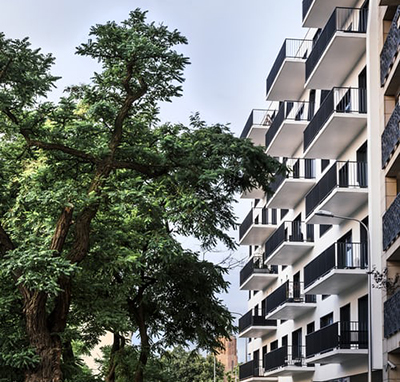
CRE Professionals Optimistic for Multifamily Market

The multifamily market will likely continue to see strong demand following a positive year of investment activity in 2021, said Berkadia, New York.
The firm said 82 percent of mortgage bankers and investment sales advisors it interviewed in December expect multifamily rental demand will outpace supply this year and 36 percent expect transactions to increase from last year despite the potential of rising interest rates and inflation.
“As we saw last year, multifamily remained a strong market with major returns compared to other sectors of commercial real estate that continue to face major impacts from the pandemic,” said Ernie Katai, Executive Vice President and Head of Production at Berkadia. “With the widespread understanding for the need of quality multifamily supply and sustainability, as well as the enhanced availability of capital and financing sources, the multifamily industry has hopes set high for an even better year in 2022.”
The report noted mortgage bankers expect to see the most activity in 2022 from the GSEs (66 percent) and private funds/debt funds (24 percent). Investment sales advisors surveyed expect most activity will come from private domestic capital sources (58 percent).
Most mortgage bankers and investment sales advisors–94 percent–agreed renters have flocked to suburban areas more than big cities, the report said. “With the opportunity for more square footage and lower prices, as well as booming employment hubs near several metro areas, this trend is expected to stay,” Berkadia said. In fact, 61 percent of people surveyed said 2022 investment sales activity will be highest in secondary markets.
“Though large cities began making a comeback last year after the initial exodus of renters and investors due to the COVID-19 pandemic, secondary markets are consistently keeping the interest of renters and investors,” Katai said. “The boom in interest of secondary markets is likely here to stay as more people find work opportunities and improvements in quality of life within these markets.”
Berkadia said investors are more interested in Low Income Housing Tax Credit or Housing Assistance Payment affordable housing properties this year than last year. The Southeast is especially likely to see an increase in affordable housing development over the next two years.
Many professionals surveyed said modifying tax credit policy (49 percent) could improve the affordable housing crisis. Mortgage bankers and investment sales advisors said they anticipate existing affordable housing property acquisitions (31 percent) and rehabilitations of existing affordable housing properties (29 percent) to be most attractive or see the most investor interest over the next two years.
“With rising investor interest, ample capital and [GSE] caps for mission-driven lending, new developments, acquisitions and rehabilitations in affordable housing look promising this year,” Katai said. “As more industry leaders advocate for affordable housing, we can further serve those in our community who need it.”
